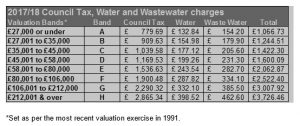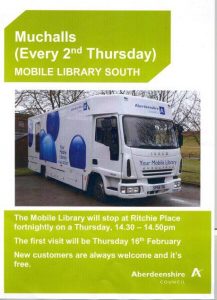This article from LGIU Scotland explains how councils are funded:
With a few exceptions, it looks like the majority of councils will increase Council Tax bills by 3%, the maximum rise they are allowed, and the first rises for nine years. At the same time, changes have been made to higher banded domestic properties meaning those residents will pay more in any case, as much as 22.5% for those in the highest banded properties.
Also, many businesses have seen their Non-Domestic rates bills increase considerably as a result of the 2015 revaluation of property values, the first since 2008, leading to warnings that many businesses will be forced to lay off staff or even close.
Understandably, all of this renewed interest in local taxation has led many to once again ask – who pays for local services, and what do they get in return?
It is often said that Council Tax only pays for a small proportion of the cost of local services such as Education, Social Care, Environmental services, and Libraries and Museums etc. While this is certainly true, it is also a bit more complex than that.
Council Tax funds around 14% of expenditure on local services; 17% is funded from Fees and Charges such as entrance fees to sports centres and parking charges; 17% is funded from Business Rates, although the rate poundage is set nationally; and 52% is funded from Central Government grant. These figures, of course, vary slightly from Council to Council. And, the 52% Central Government grant is itself raised from general taxation, with the main sources being Income Tax, Value Added Tax (VAT), National Insurance and Corporation Tax.
In other words, as an individual you may be paying for local services through Council Tax on the property you occupy, plus parking charges for the car you drive, a portion of Income Tax and National Insurance on your earnings, and a portion of the VAT on the goods and services you buy. In addition, if you own your own business you may be paying through Non-Domestic rates and Corporation Tax.
So, the answer is far from straightforward.
Leaving aside Fees and Charges which are for services you choose to use, how do you judge whether you are getting value for money from the taxes that you pay?
Again the answer is not straightforward. If you have no children, or your children are not at school, you may not place great value on Education services which account for around 33% of Council expenditure; or if members of your family are not in need of social care, you may not place great value on Social Work services which account for around 27% of Council expenditure; and as domestic refuse collection has moved from a weekly service to a fortnightly or three-weekly service, you may feel you are getting less of a service than previously.
But of course, these arguments ignore the fact that both Council Tax and Business Rates are local taxes, not charges for services, and are a way of funding services for the benefit of all, not just for the benefit of those who use the services. A fact not always understood by the public.
As mentioned previously, the Business Rate poundage is set nationally. In contrast, the level of Council Tax is set locally, collected locally and retained locally – so it is truly a local tax, albeit increases are restricted to 3%. However, even after twenty-five years of existence, the variation in the levels of Council Tax between Councils is not nearly as great as you might think, particularly between the four Cities and between neighbouring Councils. So, comparisons are not as valuable as you might think.
One of the consequences of a nine-year Council Tax freeze has been that it has stifled interest in Council budgets and Council services. So, in this regard, all the recent media coverage of Council Tax rises and Business Rates increases can be viewed as a boost for local democracy.
Looking ahead, will all of this heightened interest in local services prove to be a one off? I don’t think so. Even though a 3% rise is likely to become the norm over the next few years, the ever increasing pressure on Council budgets is likely to ensure a continued interest in local services, albeit the focus will be more on service redesign and service cuts.



